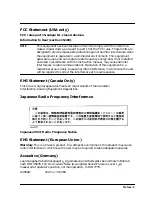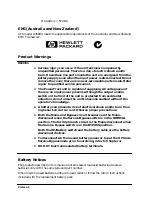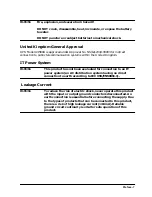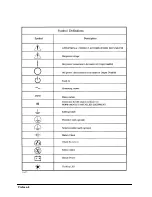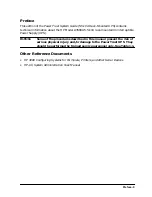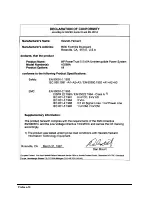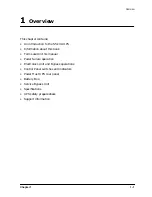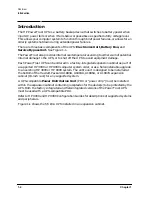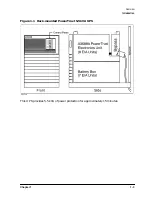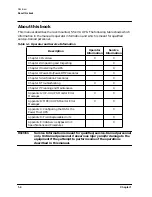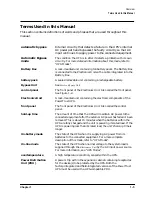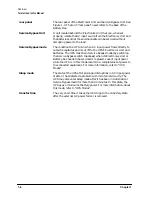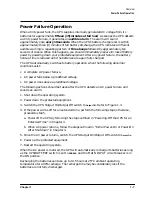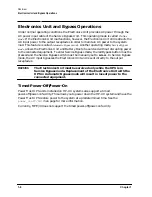
Chapter 1
1-7
Overview
Power Failure Operation
Power Failure Operation
When utility power fails, the UPS supplies internally generated AC voltage from its
batteries for approximately fifteen (15) minutes at full load. As soon as the UPS detects
a utility power failure, it generates an audible alarm. The alarm will sound
approximately once every 10 seconds. When the UPS's battery charge level is within
approximately three (3) minutes of full battery discharge, the UPS initiates a different
audible warning: a repeating pattern of three beeps followed by approximately ten
seconds of silence. When this happens, you should immediately prepare for loss of battery
power by powering down your protected equipment. After any power failure, the battery
hold-up time is reduced until the batteries are again fully charged.
The UPS automatically switches to battery operation when the following abnormal
conditions exist:
• A complete AC power failure.
• AC power falls below a predefined voltage.
• AC power rises above a predefined voltage.
The following actions should be taken after the UPS detects an AC power failure and
sounds an alarm:
1. Shut down the operating system.
2. Power down the protected equipment.
3. Switch the UPS Output On/Output Off switch to
Output Off
. Refer to Figure 1-3.
4. If the power will be off for an extended time, perform the following steps; otherwise,
proceed to step 5.
a. Power off the UPS by following the steps outlined in “Powering-Off the UPS for an
Extended Time” in Chapter 4.
b. When AC power returns, follow the steps outlined in “Initial Power-On or Power-On
After Shutdown” in Chapter 4.
5. Once the AC power returns, switch the UPS Output On/Output Off switch to
Output On
.
6. Power up the protected equipment.
7. Restart the operating system.
When the AC power is restored, the UPS will automatically recharge its batteries as long
as the UPS/BATTERY switch is set to
ENABLE
and the MAIN INPUT circuit breaker is in
the ON position.
Recharging the batteries can take up to 14.5 hours at 25
°
C ambient operating
temperature for a 90% recharge. The recharge time may be considerably less if the
batteries are not fully discharged.
Summary of Contents for PowerTrust A3589A
Page 7: ...Contents Contents 5 ...
Page 8: ...Contents 6 Contents ...
Page 10: ...Contents 8 Figures ...
Page 12: ...Contents 10 Tables ...
Page 14: ...2 ...
Page 20: ...Preface 8 ...
Page 22: ...Preface 10 ...
Page 52: ...1 30 Chapter1 Overview Specifications Figure 1 8 UPS Input Voltage Transfer Points ...
Page 56: ...1 34 Chapter1 Overview UPS Modes Figure 1 10 Simplified UPS 5 5 kVA UPS Block Diagram ...
Page 62: ...1 40 Chapter1 Overview Support Information ...
Page 76: ...2 14 Chapter2 Unpacking and Inspecting Shipping and Storage Requirements ...
Page 104: ...3 28 Chapter3 Installing the UPS Examples of PowerTrust Connections in a System ...
Page 116: ...5 4 Chapter5 Verification Procedures Load Testing ...
Page 148: ...7 6 Chapter7 Cleaning and Maintenance Exchanging Batteries Fan ...
Page 190: ...A 42 AppendixA HP UX UPS Monitor Error Messages Log Only Messages ...
Page 218: ...C 8 AppendixC Configuring the OS for the PowerTrust UPS Power Failing the UPS ...



